Introduction to the Bald Eagle bird
The Bald Eagle (Haliaeetus leucocephalus) is one of the most recognized birds in North America and serves as a powerful symbol of freedom and strength. With its piercing eyes, white head, and majestic wingspan, the bald eagle has become an emblem not only of the United States but also of conservation success stories. This article will explore everything you need to know about this fascinating bird: its habitat, behavior, diet, conservation status, and why it remains a key figure in American culture.
Overview of the Bald Eagle
The bald eagle is a bird of prey belonging to the Accipitridae family, which also includes hawks and other eagles. It is not actually bald; the name “bald” is derived from an older English word meaning “white-headed.”
- Scientific name: Haliaeetus leucocephalus
- Average wingspan: 6 to 7.5 feet (1.8 to 2.3 meters)
- Body length: 28 to 40 inches (70 to 102 cm)
- Weight: 6.5 to 14 pounds (3 to 6.5 kg)
- Lifespan: 20-30 years in the wild, up to 50 years in captivity
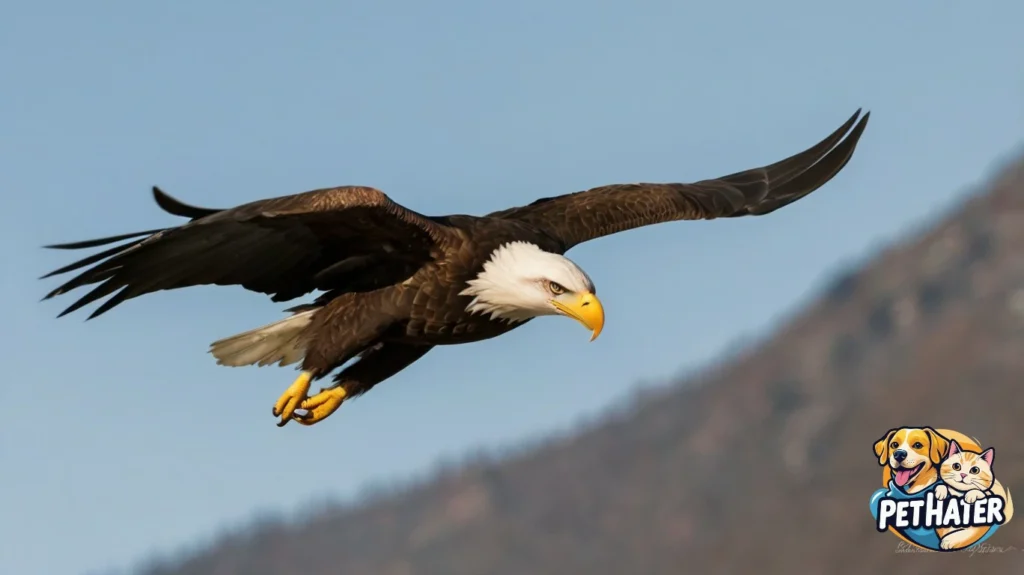
Habitat and Range
Bald eagles are native to North America. They can be found across Canada, the United States (including Alaska), and northern Mexico. Their ideal habitats are:
- Near large bodies of water such as lakes, rivers, and coastal regions
- Forested areas with tall trees for nesting
- Remote regions with minimal human disturbance
They require access to open water with abundant fish, their primary food source, and tall trees for nesting and roosting.
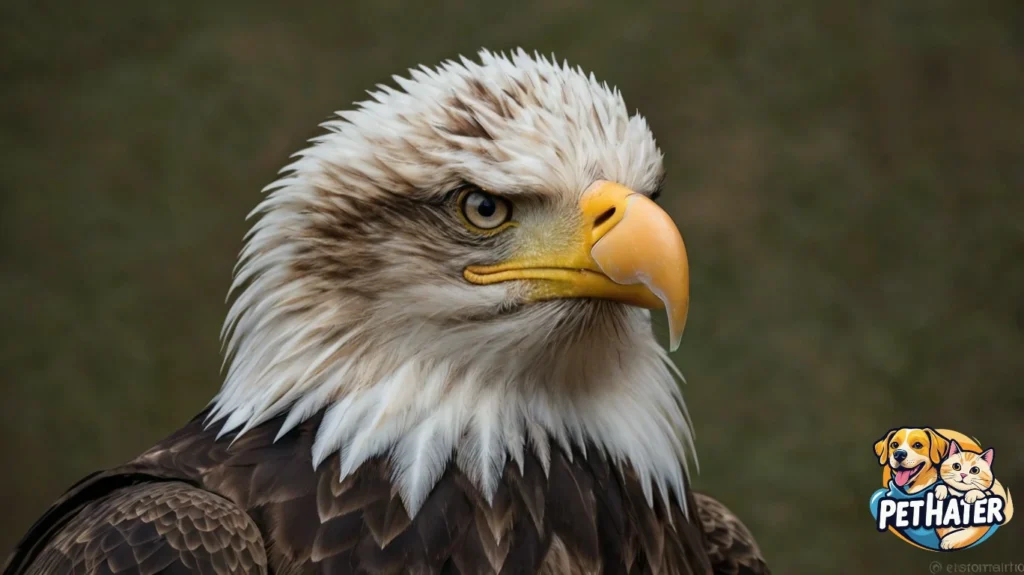
Physical Appearance
The bald eagle is easily recognizable due to its contrasting white head and tail feathers with a dark brown body and wings. Juvenile bald eagles, however, look very different. They are mostly brown with white mottling and only gain their characteristic coloring at around 4-5 years of age.
Another striking feature is the yellow beak and feet, and their powerful talons are adapted for catching and carrying prey.
Diet and Hunting Habits
Bald eagles are carnivorous and primarily eat fish, but they are also opportunistic feeders. Their diet includes:
- Fish (mainly salmon, trout, and catfish)
- Waterfowl and seabirds
- Small mammals (such as rabbits and squirrels)
- Carrion (dead animals), especially in winter when live prey is scarce
They are skilled hunters and use their keen eyesight to spot prey from great distances. Bald eagles often swoop down at high speeds to snatch fish out of the water with their sharp talons.
Sometimes, they also scavenge or steal food from other birds such as ospreys—a behavior known as kleptoparasitism.
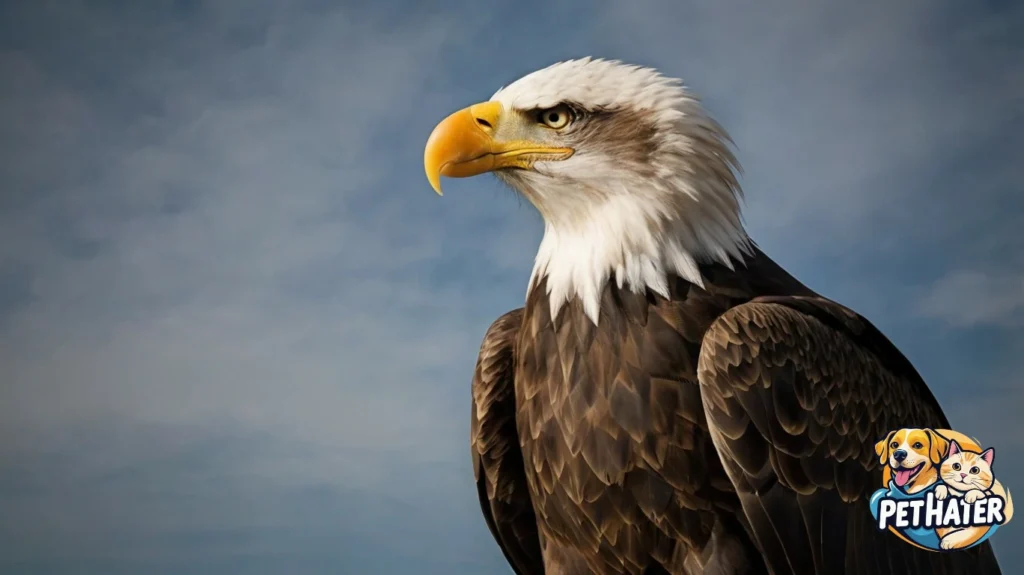
Reproduction and Nesting
Bald eagles are monogamous and usually mate for life. They return to the same nesting site year after year, often adding new materials to the existing nest. These nests, called aeries, are built in tall trees or on cliffs and are made of sticks, grass, and other plant materials.
Nesting facts:
- Breeding season: Late winter to early spring
- Eggs laid: 1 to 3 eggs per clutch
- Incubation period: Around 35 days
- Fledging: Young eagles leave the nest after 10 to 12 weeks
The bald eagle’s nest is one of the largest of any bird in North America, sometimes measuring up to 13 feet deep and 8 feet wide, and weighing over a ton.
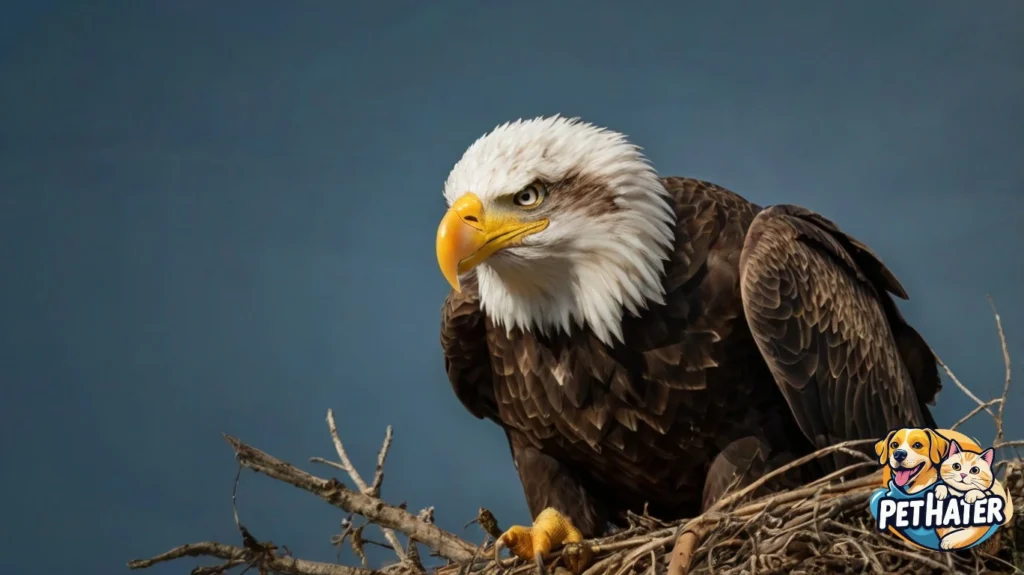
Bald Eagle Symbolism and Cultural Significance
The bald eagle has been the national bird and symbol of the United States since 1782, appearing on official seals, currency, passports, and military insignia.
Why was it chosen?
- Strength, courage, and freedom
- Exclusive to North America
- Impressive and majestic appearance
In many Native American cultures, the bald eagle is considered sacred and is associated with spiritual power and wisdom. Eagle feathers are used in ceremonies and rituals, and owning one is a great honor.
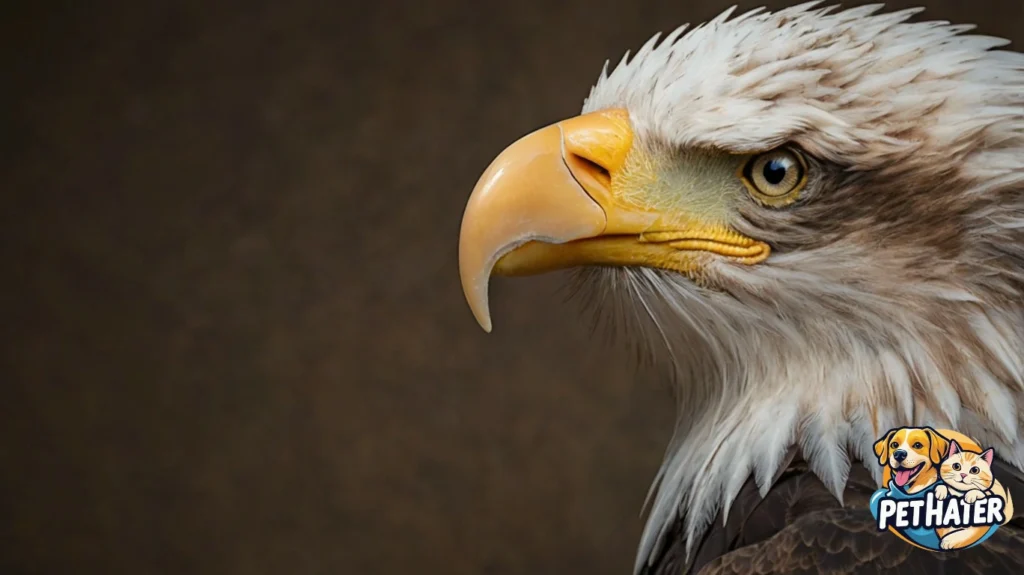
Conservation Status and Recovery
In the mid-20th century, bald eagle populations plummeted due to:
- Habitat destruction
- Illegal shooting
- Pesticides (especially DDT), which caused thinning of eggshells
By 1963, the number of nesting pairs in the lower 48 states dropped to around 400. The use of DDT was banned in 1972, and bald eagles were listed under the Endangered Species Act in 1978.
Conservation milestones:
- Banning harmful pesticides like DDT
- Legal protection through the Bald and Golden Eagle Protection Act
- Establishing protected nesting zones
- Captive breeding and reintroduction programs
Thanks to these efforts, bald eagle populations rebounded dramatically. In 2007, the bald eagle was officially removed from the U.S. Endangered Species List.
Today, there are over 300,000 bald eagles in the wild across North America, a shining example of conservation success.
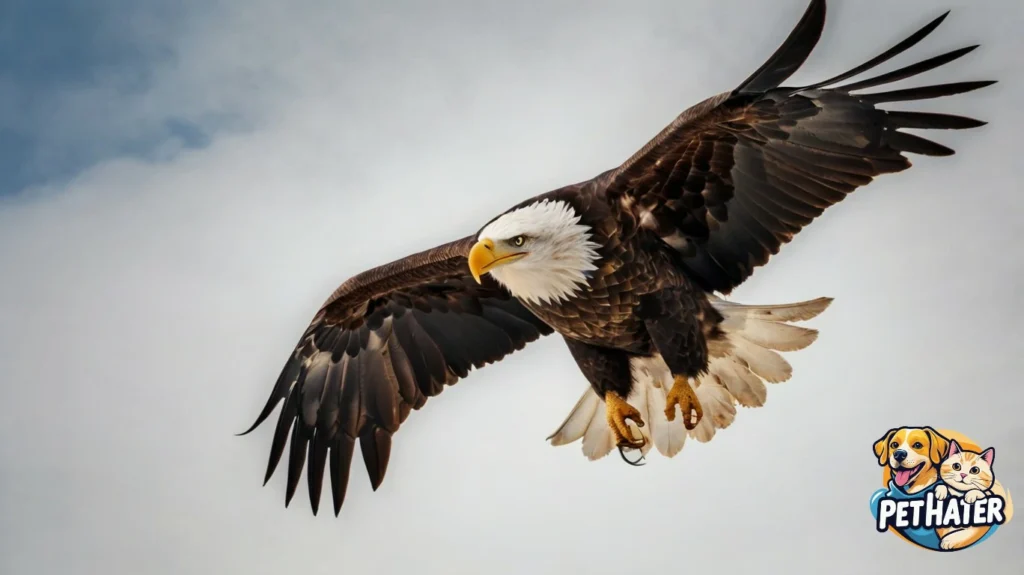
Threats and Challenges Today
Although populations have recovered, bald eagles still face modern-day threats:
- Lead poisoning from ingesting lead ammunition in carcasses
- Collisions with vehicles, power lines, and wind turbines
- Habitat loss due to urban development
- Climate change, which affects fish populations and nesting areas
Continued public awareness, wildlife protection laws, and conservation efforts are essential to safeguard the future of the bald eagle.
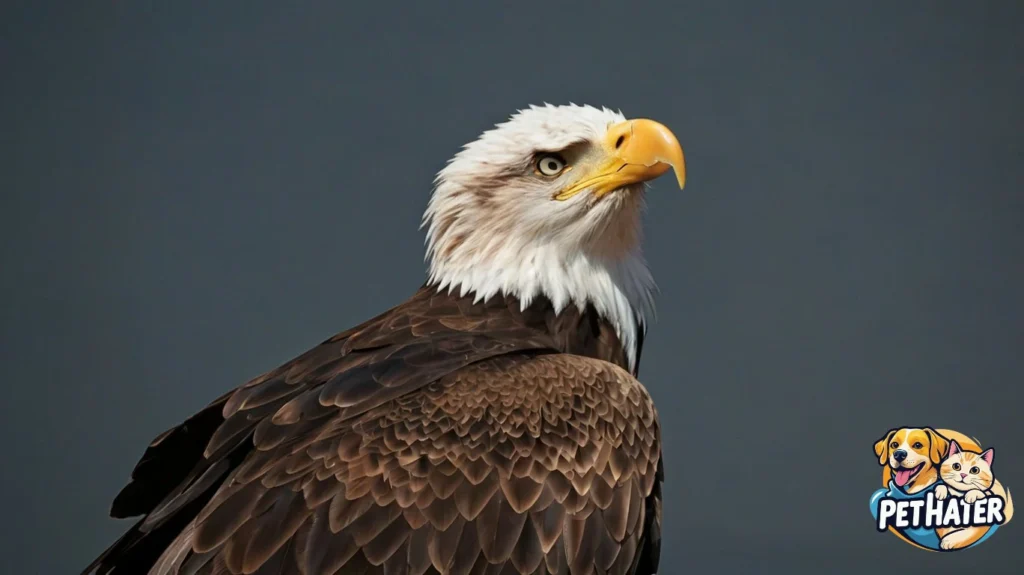
Bald Eagle Fun Facts
- A bald eagle can fly at speeds of up to 35-43 mph (56-70 km/h) and dive at over 100 mph (160 km/h).
- They have extremely sharp vision, estimated to be 4 to 5 times better than a human’s.
- Bald eagles communicate using high-pitched whistles and chirps.
- The famous “eagle scream” often heard in movies is actually from a red-tailed hawk; the bald eagle’s real call is more of a high-pitched chirp.
- The oldest recorded wild bald eagle lived to be 38 years old.
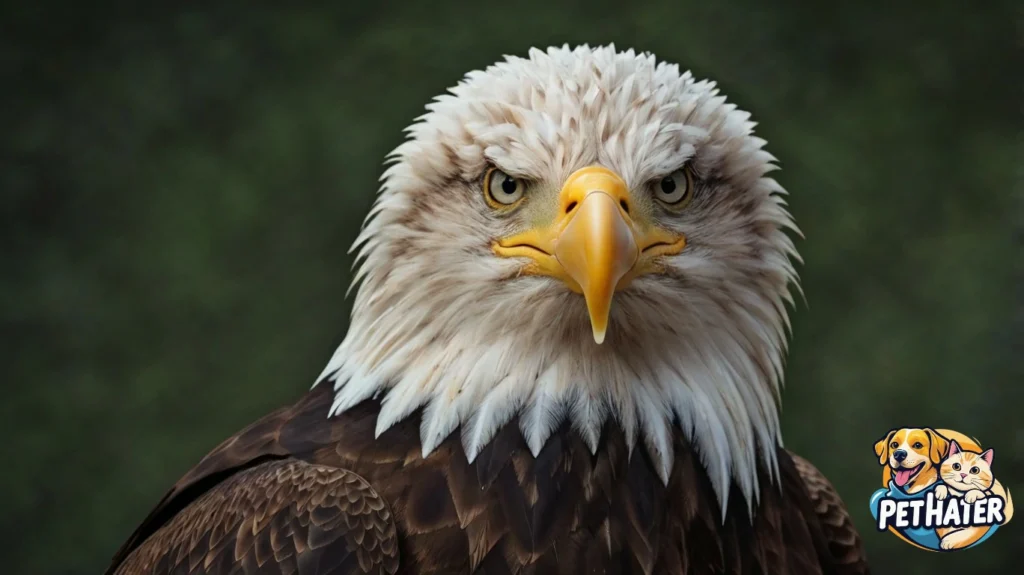
Conclusion
The bald eagle is more than just a bird—it’s a powerful representation of resilience, freedom, and the success of conservation efforts. From the brink of extinction to a thriving population, the story of the bald eagle inspires hope and action in preserving wildlife across the planet.
Whether you’re a birdwatcher, a conservationist, or someone who admires the beauty of nature, the bald eagle stands as a reminder of what’s possible when humans choose to protect the natural world.
